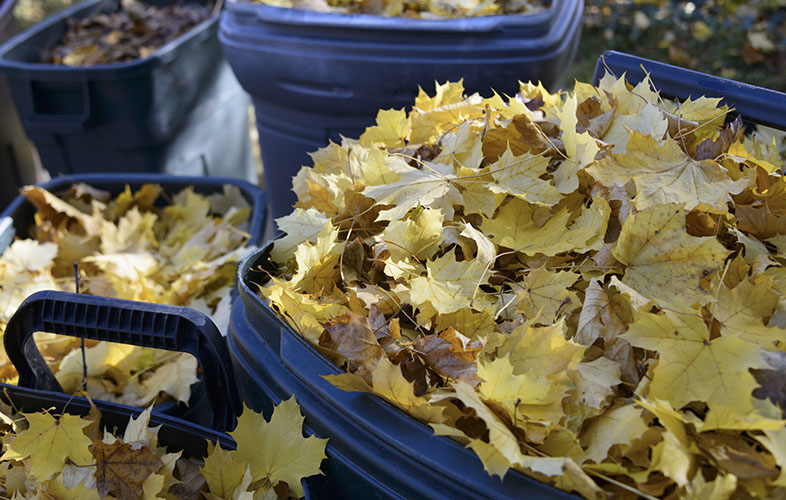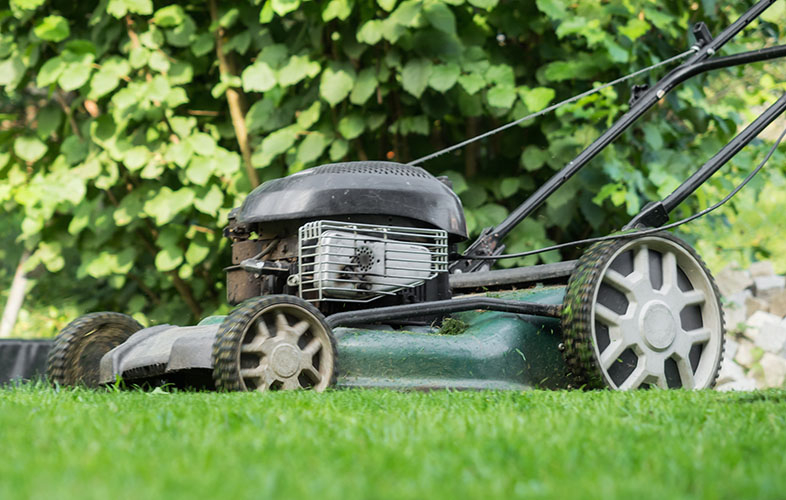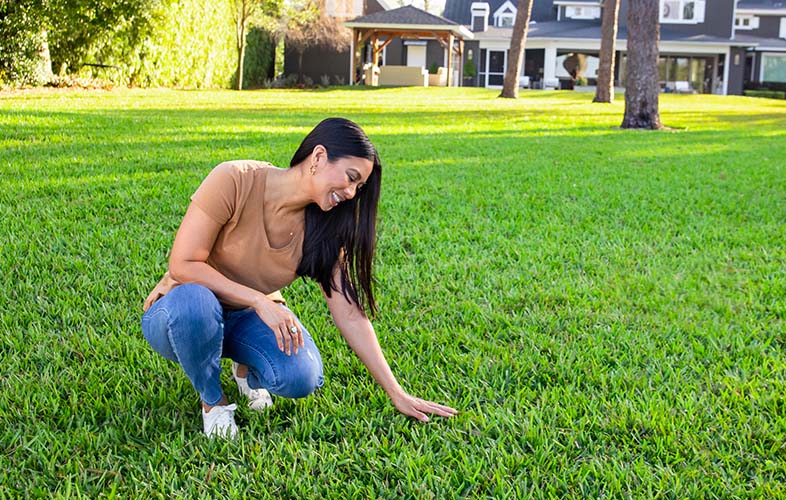Is it Better to Rake or Mulch Your Leaves?
Can you smell that crisp autumn air? As breezes of pumpkin spice fill our noses, the magic of fall transforms our green trees into colorful masterpieces. But after the colors fade, the leaves fall and you’re left with a mess of leaves on your lawn. What to do now?
Tradition tells us to rake our leaves, jump in the pile, then bag them up and get them out. Many homeowners prefer bagging grass and leaf clippings after mowing for a cleaner end result. However, there are just as many benefits to mulching these leaves into the lawn with a properly equipped mower as there are for mulching grass clippings rather than bagging them. When mowed properly, leaves and grass clippings add nutrients to the lawn, improve the soil, and save time, money and the environment. To help you get started, we’re answering your most common questions about mulching.
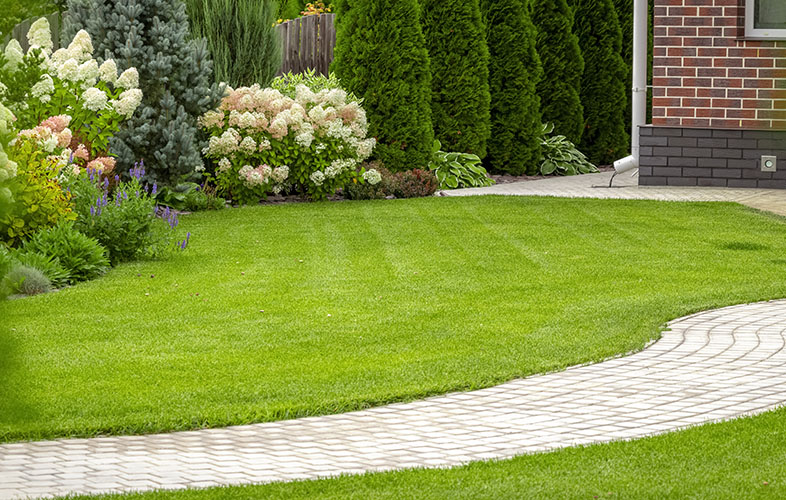
Will Mulching Cause Thatch Build-Up?
No, mulching grass clippings and leaves back into the lawn does not cause thatch build-up. Thatch is a naturally built-up layer of loose organic matter made up of grass stems and shoots that are slow to decompose, while grass clippings are succulent tissues that, along with fallen leaves, decompose quickly when mulched and return nutrients back to the lawn.
Pro Tip: Wait until the leaves are dry before mowing them. Wet leaves can be difficult to manage. Mow regularly through the fall to avoid an accumulation of leaves. A thick layer of leaves may have to be mowed several times in different directions to be properly mulched.
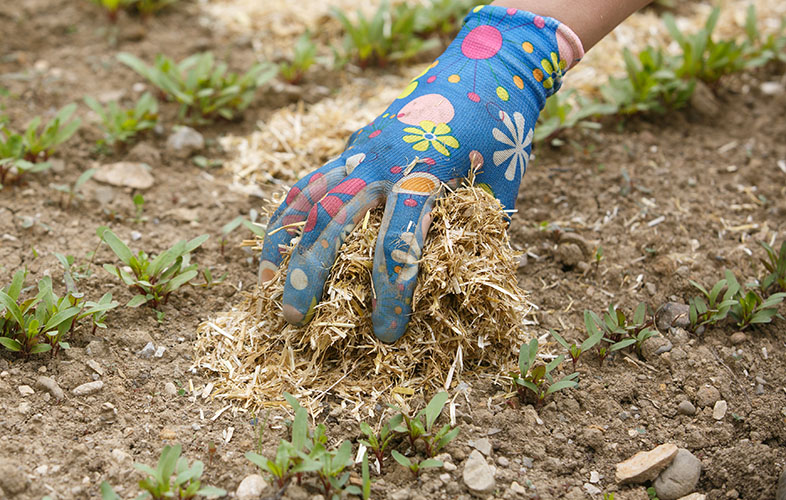
Does Mulching Nourish Your Lawn?
In short, yes, mulching nourishes your lawn. It is extremely valuable to your lawn care regimen and provides numerous nutrients to the soil. Mulching your grass clippings back into your lawn when you mow can return up to 25% of your lawn’s nutritional needs. Mulching leaves into your lawn can improve soil conditions and provides nutrients to the lawn.
In addition to nourishing your lawn, mulching grass clippings and leaves when you mow saves time, money and is better for the environment. Dealing with lawn clippings or raked up leaves can often be a painful and laborious process. Mowing, bagging and disposal takes a lot of time out of your day. Plus, returning clippings to the lawn saves valuable landfill space. Cutting that process in half and providing your lawn with added nutrients sounds like a win-win to us! Let us be your guide on how to become an expert mulcher.
How Do I Mulch My Lawn?
In just a few steps, you can save both time and money by learning how to correctly mulch leaves and grass clippings back into your lawn when you mow. All you will need to find success is a mulching mower or a mulching kit for your mower and a few simple steps.
- Mow - Most rotary style mowers provide the option to mulch rather than bag or side discharge clippings. If not, a mulching kit may be required. Setting your mower to the correct height whenever you mow your lawn is crucial. You should aim for a mower height that removes no more than one-third off the top of the grass.
- Refine - When mulching leaves, you may have to pass over an area of accumulated leaves more than once in different directions to grind the clippings and refine their size even further. This is best done when leaves are dry.
- Hydrate - Typically we experience an increase in rainfall in the fall which contributes to improved growing conditions and lawn recovery after stressful summer conditions. However, if dry conditions are experienced, lawns should be watered regularly to avoid drought stress. This moisture will also aid in the breakdown of leaves once they have been mulched into the lawn.
Mulching when you mow should not be limited to the fall to address fallen leaves. Mulching whenever you mow your lawn, rather than bagging grass clippings, returns nutrients to the lawn, saves you time and effort and reduces landfill waste. The key is to mow at the correct height for your grass type and never remove more than one third off the top of the grass blade.
When Should I Rake My Grass?
After an intense winter, your lawn is probably looking less than ideal. To get it back up to par, raking your grass is definitely something to consider. Raking with a leaf (fan) rake encourages healthy growth by removing dead grass and residual fall leaves, improving air circulation and addressing mold issues. Knowing the correct time to rake can ensure that you have a full, green lawn for the warmer months ahead. For the healthiest lawn, the best time to rake is once the lawn has dried out somewhat and you notice your lawn starting to turn green again. Raking too early when the lawn is still saturated in early spring may cause damage. This exact timeframe may vary by your location and the climate you are in.
Whether you’ve decided to mulch your grass clippings and leaves when you mow your lawn or take the old-school approach and rake and bag them, TruGreen's certified specialists can provide guidance and services backed by our TruGreen Guarantee.

